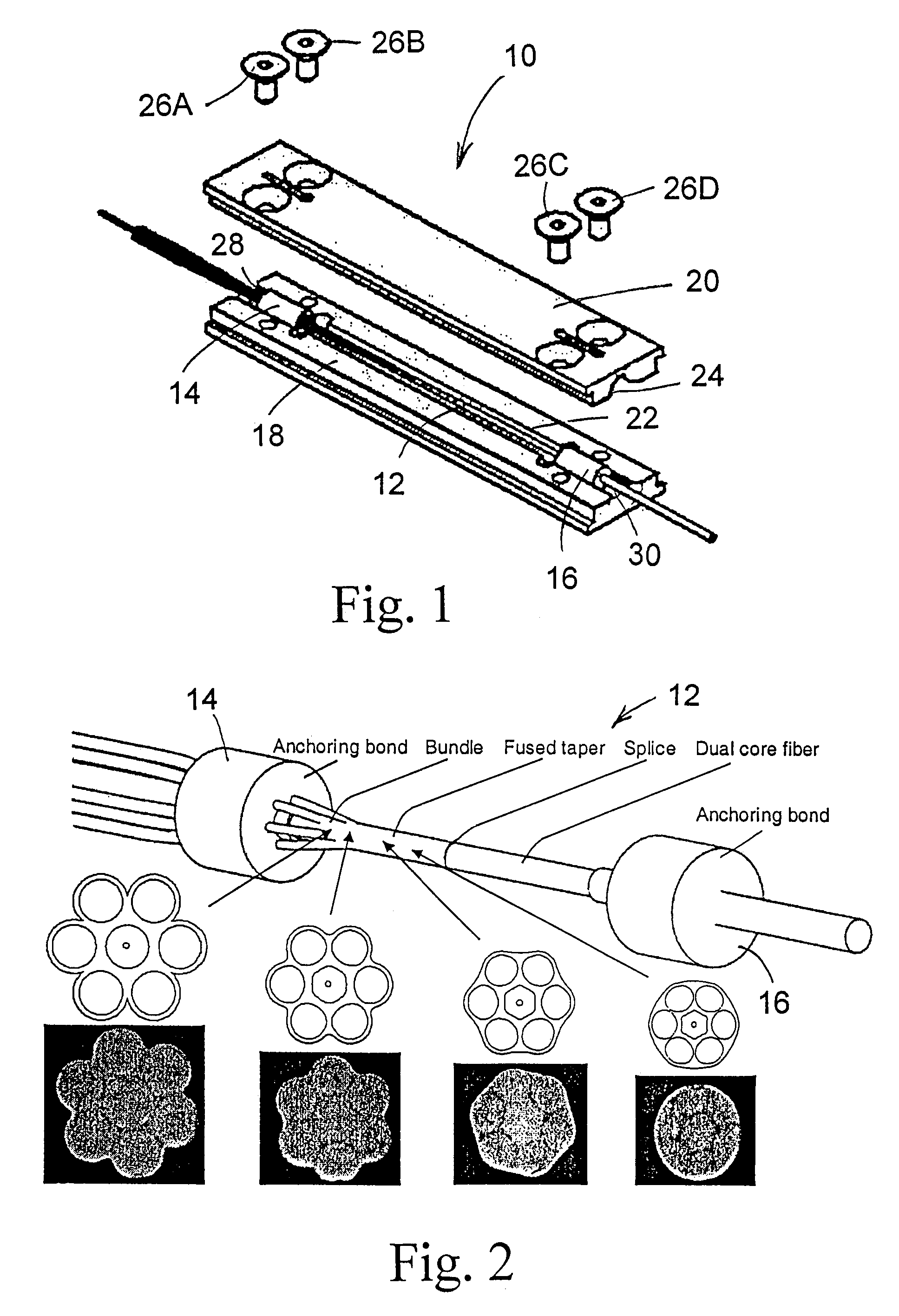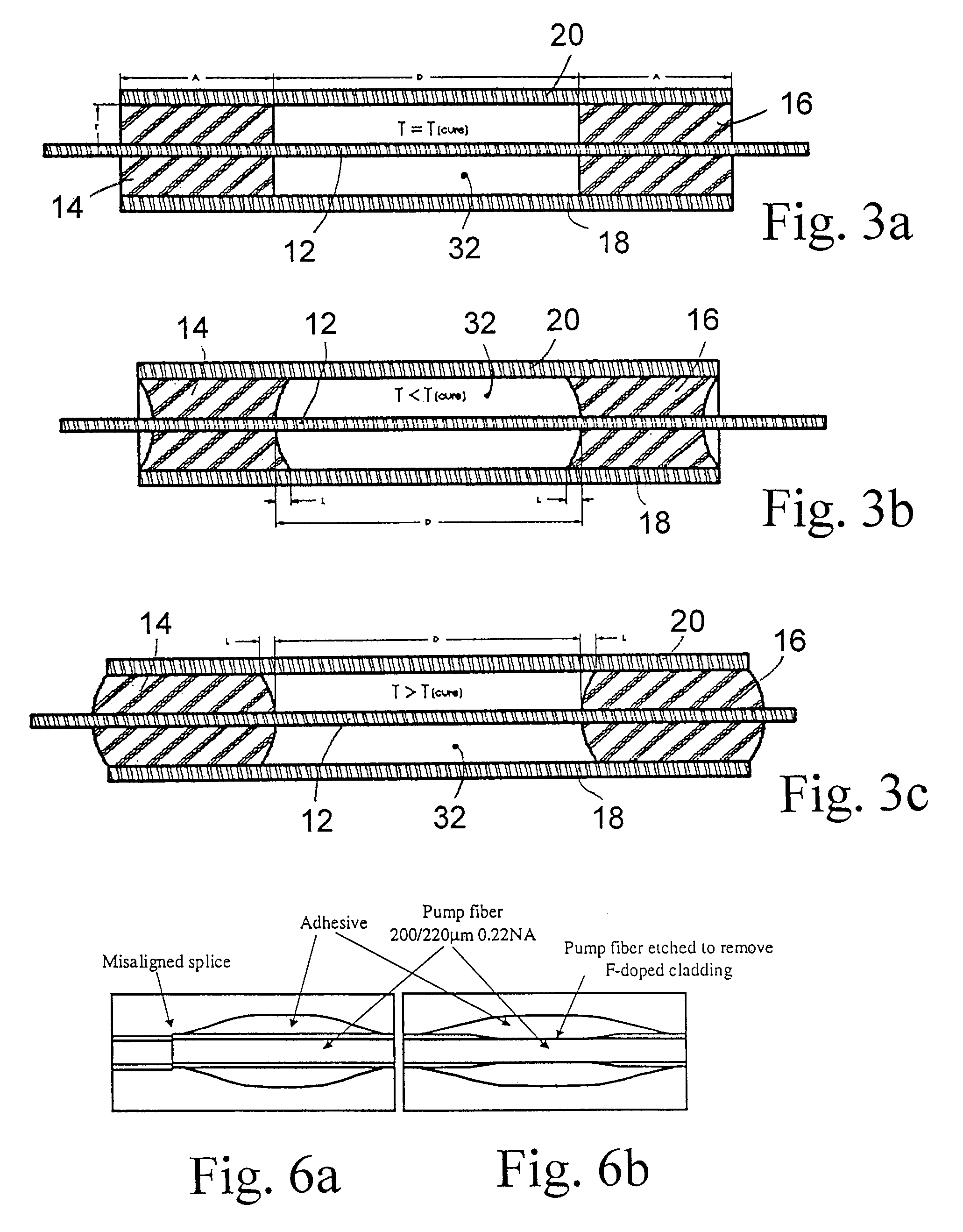Optical fiber component package for high power dissipation
a technology of optical fiber and component package, applied in the field of optical fiber component package, can solve the problems of inability to solve component related power handling problems, inability to use optical fiber based loss extraction, and limited power levels for most applications, so as to maximize thermal conductivity, minimize reflection, and maximize the effect of effective dissipation
- Summary
- Abstract
- Description
- Claims
- Application Information
AI Technical Summary
Benefits of technology
Problems solved by technology
Method used
Image
Examples
Embodiment Construction
[0038]Preferred embodiments of the invention will now be described with reference to the appended drawings.
[0039]FIG. 1 illustrates a preferred design of the package 10 for an optical fiber device 12 packaged in accordance with the present invention. The optical fiber device 12 in this embodiment is a tapered fused bundle (TFB) coupler used to combine signal and pump power, which is illustrated in greater detail in FIG. 2, although it may be any device capable of carrying a high power signal. At each end, the TFB is anchored by means of an adhesive bond 14 and 16 respectively to a packaging substrate consisting of lower and upper sections 18 and 20 respectively. Each section is provided with a grooved channel 22 and 24 respectively in which the device 12 is packaged when the two sections are fastened to one another, for example by means of screws 26A, 26B, 26C and 26D. Strain relief shapes 28, 30 are provided at each end of the device 12 applied to the ends of channel 22 and similar...
PUM
| Property | Measurement | Unit |
|---|---|---|
| thickness | aaaaa | aaaaa |
| transparency | aaaaa | aaaaa |
| temperature | aaaaa | aaaaa |
Abstract
Description
Claims
Application Information
 Login to View More
Login to View More - R&D
- Intellectual Property
- Life Sciences
- Materials
- Tech Scout
- Unparalleled Data Quality
- Higher Quality Content
- 60% Fewer Hallucinations
Browse by: Latest US Patents, China's latest patents, Technical Efficacy Thesaurus, Application Domain, Technology Topic, Popular Technical Reports.
© 2025 PatSnap. All rights reserved.Legal|Privacy policy|Modern Slavery Act Transparency Statement|Sitemap|About US| Contact US: help@patsnap.com



